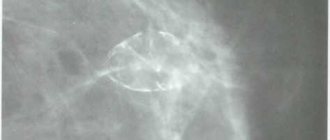The labia majora and minora are part of a woman's external genitalia. The labia majora are two folds of skin supplied with adipose tissue and venous plexuses. They contain Bartholin's glands, which are necessary to maintain moisture in the vestibule of the vagina. The labia majora begin at the pubis and end at the perineum. Between them there is a genital gap.
The labia minora are located inside the labia majora, but can sometimes protrude beyond them. They look like two skin folds located longitudinally. The labia minora originate from the head of the clitoris, pass through the urethra, vestibule and vagina and, connecting at the back, form a commissure. The organs are distinguished by abundant blood supply and innervation. They contain many different glands.
General information about the organ
The labia majora and minora are not just folds of skin. These formations have several important functions. First of all, it is a two-level protection of the genitourinary system from infection and negative environmental factors.
The labia minora provide protection to the urethra and vaginal opening. They are lined with soft epithelium and resemble moistened petals pressed tightly against each other. Also, these formations do not allow the internal mucous membranes to dry out.
The labia majora provide protection to the labia minora from external influences. A pair of large skin folds also acts as a thermostat, protecting the genitourinary system from hypothermia or overheating.
Ideally, the large lips should completely cover the small lips and not touch the inner thighs or each other. It is also allowed for the small lips to partially extend beyond the edges of the large lips, but not more than 10 mm. Anything more is pathology.
Causes of labia enlargement
The size of skin folds can change for a variety of reasons. Doctors conditionally divide them into 3 large groups:
- Genetic. Most often, hypertrophy or insufficient development of the vulva occurs in those women who were born prematurely or with low birth weight. Doctors say that this feature of the female body is very often determined by heredity. In the first stages of a girl’s life, this structural feature of the external genitalia does not in any way affect her self-esteem and does not cause discomfort. However, during puberty or during the first sexual intercourse, the vulva may change in size. This causes discomfort in the girl and provokes the development of complexes.
- Individual characteristics and inflammatory diseases. Very often, the external genitalia hypertrophy after acute or chronic vulvitis. The same can happen after lymphadenitis. Sometimes skin folds increase due to increased production of male sex hormones. Finally, lip ptosis can occur in women who have suddenly lost excess weight.
- Injuries or mechanical impacts. With age, all women experience stretching of the vulva. It reaches its maximum values between 50 and 60 years of age. In some women, hypertrophy of the intimate zone is observed after the birth of several children. Moreover, even having sex can lead to such a defect.
This is not a complete list of reasons that cause changes in the size of the lips major and minor. But these reasons are the most common.
Types of pathologies
Diseases on the labia can occur under the influence of many factors. Depending on the etiology, such ailments can be divided into several groups:
- Infectious. Such diseases can be provoked by sexually transmitted pathogens and other aggressive viruses, bacteria and fungi. These include chancroid, genital herpes, molluscum contagiosum, various types of vulvitis, etc.
- Cysts and tumors. Among such ailments are benign cysts, fibroids and fibroids, as well as cancer.
- Allergic. Such diseases include dermatitis and other local allergic reactions.
- Caused by mechanical damage. This group of diseases includes various injuries and their consequences, in particular, vulvitis of non-infectious etiology.
- Other diseases. Among such pathologies one can distinguish hypertrophy of the labia, their fusion, etc.
A qualified gynecologist can accurately diagnose pathologies of the labia. To determine the exact cause of the illness, various research methods can be used.
Infectious pathologies
Most often, the development of infectious processes affecting the female reproductive system causes inflammatory lesions in the area of the external genitalia, in particular the labia. Doctors classify this condition as vulvitis (if inflammation affects the vaginal mucosa, they speak of vulvovaginitis). A variety of pathogens can cause its development:
- Opportunistic microorganisms represented by Escherichia coli, streptococci, yeast fungi.
- Pathogenic agents of sexually transmitted diseases. These include gonococci, trichomonas, chlamydia, etc.
- Atypical pathogens, for example, tuberculosis or diphtheria, etc.
An infection of the labia causes significant discomfort. Therefore, it is quite difficult not to pay attention to its development. The disease provokes:
- Severe swelling and redness of the genitals. Ulcers and erosions may occur (with genital herpes, vesicles filled with transparent contents appear, and with the development of a soft chancre, a bright red spot forms on the labia, which soon becomes a vesicle, and then a pustule and ulcer). Sometimes such symptoms spread to the groin folds and even to the skin of the inner thighs.
- Severe discomfort, itching and burning sensations, pain.
- The appearance of specific secretions.
- Sometimes the appearance of symptoms of general intoxication (increased temperature, etc.).
In the absence of adequate therapy, vulvitis can become chronic and often recur. Treatment of this disease is carried out under the supervision of a gynecologist and depends on the factor that provoked its development. Can be used:
- Antibacterial, antifungal or antiviral medications (both local and systemic).
- Local treatment methods, for example, baths, lotions and douching.
- Additional means, in particular, hormonal and antihistamine medications, physiotherapy techniques.
- Immunity boosters, dietary supplements, etc.
To identify the cause of vulvitis, the doctor may examine a smear taken during a gynecological examination, as well as conduct additional tests. With timely diagnosis, the disease is usually easily treatable.
Molluscum contagiosum
Separately, it is worth mentioning such an infectious disease as molluscum contagiosum. This is an insufficiently studied disease caused by one of the smallpox viruses. The disease manifests itself as specific skin rashes:
- At first, small red pimples (no more than three millimeters in diameter) form on the external genitalia.
- Over time, they can spread to the mucous membranes and acquire an ovoid or oval shape.
- The rashes increase in size, protrude noticeably above the skin, and become bright crimson or pink. At the top of the papule there is a noticeable small depression or dot.
- After a few weeks, such elements of the rash are filled with a specific whitish liquid with a curd-like structure.
To date, doctors cannot offer conservative methods of treating molluscum contagiosum. The only effective way to get rid of papules is surgical or cosmetic removal. However, sometimes the rash goes away on its own.
Cysts and tumors
Benign cysts of the external genitalia are a fairly common problem, because in the labia area there are many sweat and sebaceous glands, blockage of which can lead to the formation of a capsule with liquid contents. Benign tumors are diagnosed somewhat less frequently, but most often have similar manifestations. You can suspect the occurrence of such problems by:
- Unilateral enlargement of the labia area. If the tumor or cyst grows, the problem area may become more sensitive and cause some discomfort during walking or sexual intercourse.
- Formation of a noticeable tumor on the stalk (polyp).
Treatment of the detected formation depends on its type. So, some cysts can be treated with medications (antibacterial or anti-inflammatory ointments); tumors need to be removed surgically.
Cancer in the labia area is not a very common pathology and in the early stages of development it may well manifest itself in the same way as a benign tumor (by forming a unilateral enlargement in some area). In the future, the affected area may ulcerate, hurt and fester.
Allergic diseases
Allergic diseases of the labia are, in principle, no different from reactions of individual intolerance in other parts of the body. They may appear:
- Swelling.
- Redness.
- Rash.
- Itching and burning.
- Some deposits on mucous membranes.
However, allergic diseases are quite difficult to diagnose, since they are very similar in their manifestations to classical infectious diseases. Sometimes a smear examination for the presence of pathogenic microorganisms and a blood test, which shows an increase in the number of leukocytes and eosinophils, helps to clarify the picture.
As a rule, manifestations of local reactions of individual intolerance occur soon after the aggressive influence of the allergen (intimate hygiene products, medications, new underwear, etc.) and disappear after the use of antihistamines and cessation of contact with the provocateur.
Mechanical damage
When talking about mechanical damage to the labia, doctors most often mean conditions that arise after wearing too tight underwear and sexual intercourse. Microtraumas can lead to an inflammatory process, which occurs in the form of vulvitis and is characterized by its typical manifestations (described above). Usually, to correct this condition (uncomplicated by infection) it is enough:
- Carrying out local procedures - lotions and baths.
- Use of anti-inflammatory drugs.
- Compliance with basic hygiene rules (keeping the genitals clean, using loose and natural underwear, etc.).
However, more serious damage to the labia is possible, for example, as a result of various incidents. Their therapy is carried out in the gynecological department and can be conservative or surgical.
Hypertrophy of the labia
This condition can affect the labia minora and is characterized by their abnormal enlargement - sometimes up to five centimeters. A slight change in the size of such an organ usually does not cause any discomfort, but as the pathology progresses it:
- Causes discomfort when walking, cycling, or performing hygiene procedures.
- Causes problems in sexual life.
- May cause chronic irritation.
Most often, the labia change their size after childbirth. And such a problem can only be dealt with through operational methods. Surgery is often performed under local anesthesia, it is uncomplicated and rarely causes complications.
Indications and contraindications
Before any surgical procedure, a woman must undergo a full medical examination and consult with specialized specialists. This is necessary to identify indications and possible contraindications for surgery.
Disproportionately enlarged or asymmetrical large lips can cause a lot of trouble for a woman. Due to this defect, sweating develops and thermoregulation of the genital opening and vagina is disrupted. The inevitable abrasions create a breeding ground for the development of pathogenic bacteria. As a result, instead of protecting the genitals, the labia majora become conduits for infection.
It makes sense to correct large lips in the following cases:
- There are significant age-related changes.
- Ptosis of large skin folds is noted after childbirth.
- Asymmetrical arrangement of folds.
- Flabbiness of folds with loss of their shape.
- Deformation of the perineal tissue.
Doctors can perform intimate plastic surgery at the request of the patient if she simply wants to change the shape of the vulva. However, in some cases, refusal is possible. There are a number of contraindications for surgery:
- Chronic liver diseases.
- Urogenital infections, including sexually transmitted ones.
- Immune system disorders.
- HIV.
- Critical days.
Naturally, if the cause of the refusal can be eliminated, then doctors perform intimate plastic surgery.
Contraindications for surgery
Like any surgical intervention, labiaplasty has a number of contraindications:
- Inflammatory diseases of the external and internal genital organs;
- The operation is not performed during menstrual bleeding;
- Pregnancy;
- Diseases of the blood system, manifested in the form of coagulation disorders;
- Venereal diseases;
- Any pathological conditions of the body, accompanied by fever and severe intoxication;
- Diabetes;
It should also be borne in mind that plastic surgery is not performed on girls under 18 years of age. Exceptions are cases when asymmetry leads to permanent trauma and inflammation of the perineal tissue.
Enlargement of large folds
With normal development of a woman's genital organs, the labia majora should cover the labia minora. However, for some women, for certain reasons, this is not observed. In this case, it is necessary to enlarge large skin folds in order to return them to the ability to perform their main functions. This goal is achieved in the following ways:
- Correction with mesothreads. This is a painless operation that involves the use of special threads that cause an increase in the volume of skin folds. The threads, some time after insertion, dissolve, but the enlarged forms remain.
- Lipofilling. This method involves inserting adipose tissue taken from the patient herself under the skin folds. At the same time, the small lips go deeper. Essentially, this is just a visual correction, but it is in great demand because it has a minimal recovery period.
- Intimate filling. This technique is based on the introduction of hyaluronic acid fillers into the soft tissues. This approach is good because it provides a comprehensive effect on the external genitalia. Not only does it plump up the lips, it also provides better hydration to the mucous membranes and enhances collagen synthesis.
After intimate plastic surgery, a woman will gradually stop experiencing psychological discomfort. After some time, her confidence will return and she will begin to experience sexual satisfaction from communicating with her partner.
How to solve a sensitive problem
Plastic surgeons deal with the problem of labia asymmetry. Surgery is an effective way to correct the shape and size of the labia minora or majora. Labiaplasty at the present stage is a common and fairly simple operation to perform. Most often, if the labia minora are of different sizes, then the woman decides to remove excess tissue on one of the lips. To do this, use the following methods:
- classic linear plastic surgery of the labia minora;
- wedge-shaped plastic surgery of the labia minora;
Performing a classic linear plastic surgery, the surgeon excises excess tissue on the labia minora along its edge. After this, the wound surface is sutured using an intradermal suture. For the suture, exclusively self-absorbable threads are used.
The wedge plastic method involves applying markings in the form of the Latin letter “V” to the labia, with its base directed towards the enlarged part of the lip. Excess tissue is removed by excision and the lip is sutured with an intradermal suture.
If a woman is faced with the problem of an increased size of one of the labia majora, then correction is carried out by removing excess fat from it. In cases where the labia majora, on the contrary, needs to be enlarged, lipofilling is used. The essence of this method is to inject the patient’s own fat or biopolymer gel into the lip tissue.
Any type of surgery is usually performed under local anesthesia. If no complications arise during the operation, the woman returns home on the first day after correction of the size of the labia.
Ways to reduce
It is possible to visually determine the enlargement of large skin folds if their size exceeds 4 cm. Moreover, both all lips and individual areas of them can be enlarged.
Typically, the increase occurs when the level of androgens in the body increases or due to age.
To reduce the labia majora, the following techniques are used:
- Resection of excess tissue. Most often, tissue is excised in a vertical direction, less often in a horizontal direction.
- Liposuction. The doctor removes excess fat tissue between the thigh and pubis.
In both cases, intimate plastic surgery can be performed both under local anesthesia and general anesthesia. The choice of pain relief depends on the patient’s wishes and medical indications.
The duration of each operation does not exceed one hour. Full recovery after correction takes 3 weeks. At the same time, a woman must carefully care for her intimate area, because the shape of her lips depends on this.
What problems does labiaplasty solve?
Labia minora that are too large and long, protruding from under the labia majora, cause many problems:
- During intimacy, the large surface of the genitals rubs due to lack of lubrication and excess pressure. This leads to irritation, pain and discomfort.
- Inflammatory processes are provoked. Areas of the mucous membrane that should normally be covered by the labia majora are unprotected. Upon contact with linen and clothing, painful cracks and abrasions appear on it, which are an excellent “gateway” for infection.
- It is difficult to choose clothes - choosing a swimsuit or leggings with such a feature is very difficult.
- Difficulties arise when playing sports and physical activity - women experience pain when riding a bicycle, horse or motorcycle. Protruding areas of the labia minora cause problems during gymnastics and figure skating. Even going to the gym can lead to certain difficulties.
During the operation, excess or low-hanging labia tissue is carefully removed to create a visually attractive intimate area and eliminate any existing problems. After labiaplasty, a woman does not experience problems with choosing clothes, playing sports, physical activity, or intimacy.
The sensitivity of the intimate area of the plastic does not reduce, but on the contrary, it often increases it. Let's figure out why this happens.
Reasons for Labiaplasty
Most often, correction of small folds is done at the request of a woman who does not like the aesthetics of the intimate area. Modern methods make it possible to make small folds smaller or larger and give them any shape.
From a medical point of view, indications for plastic surgery are:
- The length of the labia minora is more than 4–6 cm.
- Small folds protrude beyond the large folds by more than 3 cm.
- Folded or scalloped with pronounced pigmentation of the edges of the folds. This indicates their constant rubbing.
- Decreased sensitivity of the vulva after injury or prolonged mechanical exposure.
- The folds are underdeveloped or completely absent. In this case, enlargement of the labia minora is required using injections of biopolymers and hyaluronic acid.
It is worth noting that women who have never given birth are not recommended to undergo intimate plastic surgery. The fact is that such intervention can lead to complications during childbirth in the future.
Labiaplasty cannot be performed in the following cases:
- The woman has severe heart failure.
- She has asthma.
- The patient suffers from neurological diseases or has mental disorders.
- Increased body temperature for no apparent reason.
- Pregnancy.
- Insufficient blood clotting.
- Infectious diseases of the genital area.
Intimate plastic surgery is contraindicated for girls under 18 years of age. They will have to grow up to use the services of plastic surgeons.
How does a woman feel after labiaplasty surgery?
After labiaplasty, patients feel some discomfort. There may be slight bleeding. Some swelling and inflammation occurs, which is relieved with a cold compress. Pain can be managed with painkillers to help you feel comfortable during recovery.
Of the hygiene procedures, only a shower is allowed - a bath can be taken only after the tissues have completely healed. You cannot swim in ponds or pools, sunbathe on the beach, or take a steam bath or sauna. Exercise should be avoided for at least 4-6 weeks.
Contacts can also be resumed after 4-6 weeks. The sensitivity of the intimate area, as a rule, is restored as the tissue heals after surgery. Since nerves are not removed or damaged during labiaplasty, the sensations should be the same as before treatment or even worse.
The operation will not help with pain caused by other pathologies of the reproductive system. It is also powerless in cases of dissatisfaction with intimate life caused by damage to the nervous system and psychological complexes not related to the size of the labia. In this case, more thorough research and elimination of existing pathologies are required.
Share link:
Resizing Methods
The choice of one method or another depends on what result the woman wants to get, the size of the vulva and the presence or absence of asymmetry.
You can reduce small wrinkles in the following ways:
- Wedge resection. The essence of the operation is to cut out V-shaped flaps on each side of the vulva. After suturing the edges of the wound, the lips are reduced in size, but at the same time retain their natural appearance.
- Linear resection. This is a very simple but effective procedure. The doctor performs a W-shaped removal of excess tissue, which allows the vulva to be given a more rounded shape. The main disadvantage of this operation is the possible loss of tissue pigmentation.
- Laser labiaplasty. Compared to other techniques, it provides more precise incisions, absence of scars and rapid postoperative recovery, but its price is much higher.
Very often, at the request of a woman, lip reduction surgery is combined with clitoral plastic surgery and correction of the shape of the genitals. In this case, the time spent on the operating table increases.
Recovery period
After the operation, the woman remains in the hospital for only a short time. If surgical procedures were performed under local anesthesia, the patient can go home a couple of hours after surgery. When general anesthesia was given, then the woman would have to stay in the clinic for 1 day so that the doctors could make sure there were no complications.
While at home, a woman should adhere to the following recommendations:
- In the first 2 days, it is advisable to adhere to bed rest.
- Take antibiotics strictly as recommended by your doctor.
- After seven days, undergo examination by a gynecologist and surgeon.
- Keep physical activity to a minimum.
- Treat postoperative sutures daily.
- Abstain from sex for 3 weeks.
- Do not wear tight or synthetic underwear.
- Refuse to visit the sauna and bathhouse, and do not take a hot bath.
There is no need to remove sutures after surgery, since doctors use absorbable suture material for labiaplasty.
As for scars, they usually disappear within six months.
Proper rehabilitation
In order for everything to go according to plan, it is important to approach all treatment recommendations at the recovery stage responsibly. Over the next few weeks you will have to forget about intimacy. It is also worth postponing visiting the gym, limiting active physical activity to the point of refusing to carry weights.
For a speedy recovery, the patient should take antibiotics and other medications recommended by the attending physician. Changing the list from the recipe at your own discretion is strictly prohibited.
You cannot even change the time of administration, dosage and order of drugs, since chaos with rehabilitation often ends in the development of serious complications, including hospitalization due to an extensive inflammatory process.
A mandatory part of the program is douching with the use of antiseptic agents, which the gynecologist will select for her ward individually. To quickly heal the open wound space, healing ointments will be effective.
You will have to accept that the next three weeks will pass without:
- baths;
- saunas and other types of steam rooms;
- swimming pools;
- solariums.
All of the above belongs to the group of risky objects where it is easy to catch infections. Penetrating into a still fresh wound, they almost immediately provoke an extensive inflammatory process, delaying treatment.
In a normal situation, the fusion of the mucous membrane of the labia minora occurs quite quickly. This is also facilitated by sutures with absorbable threads, which do not leave behind any surgical traces such as scars or cicatrices.
Possible complications
Although intimate plastic surgery is not considered a complex surgical procedure, complications can still develop after it. True, the likelihood of such a development of events is small. According to statistics, complications develop in 6% of cases.
Typically, patients encounter the following complications:
- Bruising in the perineum.
- Sensation of tightness in the vulva.
- Bleeding.
- Inflammatory processes.
- Pain during sexual intercourse.
Complications after intimate operations also include the discrepancy between the planned goals and the achieved result. To minimize the risk of developing postoperative complications, you need to carefully select a clinic and attending physician.











